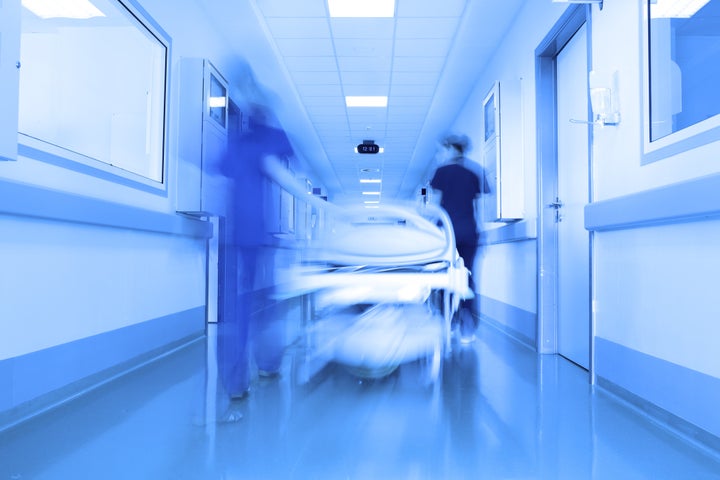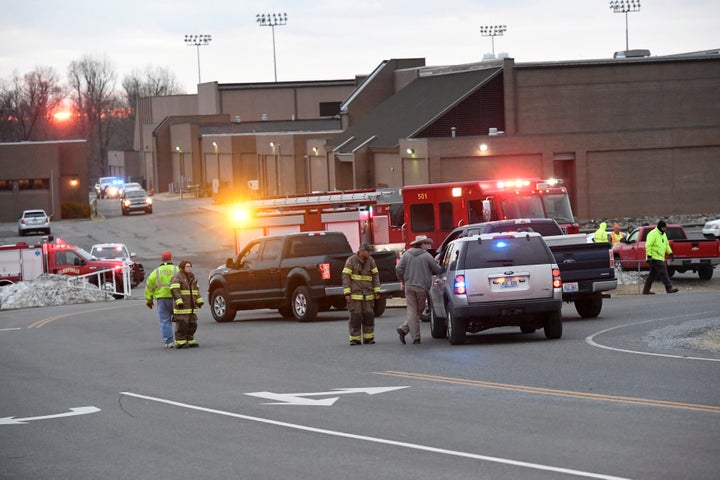
The emergency department never sleeps. At a major academic medical center like the one where I work, injuries and illness bring patients from hundreds of miles away, seeking the best medical care available. Most come through the emergency department, contributing to a constant churn and flow unique to this part of the hospital.
In January 2018, I was toward the end of a one-month stint in the ED, part of the first year of my medical residency. As an “off-service” resident, my role was to examine patients, conduct appropriate testing and discuss my diagnosis and treatment plan with the attending physician on duty. In the event of a trauma case, I was to stand in a designated spot in the trauma bay to observe and assist as needed.
As I arrived for my shift on the morning of Jan. 23, the churn and flow felt somehow heavier.
I still can’t pinpoint what it was that tipped me off, but I could tell that something was wrong. I asked a nearby nurse what was happening, and she told me there had been a shooting at a high school nearby, with an unknown number of injuries. Some had already arrived via helicopter and had been rushed to the operating room for emergency surgery. Others were en route. I dropped my bag and hurried to the trauma bay.
The trauma bay was abuzz when I arrived, and I spoke with a friend and colleague as we put on the required blue plastic gowns, gloves and surgical caps. I learned that some of the students who had already come through had potentially fatal injuries, and rumors were circulating about a possible death. No word on how many more were coming, or how many had been declared dead on the scene.
“There had been a shooting at a high school nearby, with an unknown number of injuries.”
We stood in the trauma bay, gowned in blue from head to toe, waiting. Not excited, per se, but ready to move quickly and surely, as soon as a patient arrived. We were uneasy, too, and afraid of what damage there might be. Not because the team wouldn’t be able to handle the injury, but because of our very human, visceral fear of seeing a child with devastating injuries. Somewhere in the reverent silence, I thought about these children’s parents, and the anxiety they must have been feeling as they waited outside a school, frantically searching, praying, hoping against hope to find their child alive.
I heard a commotion down the hall, and the people outside the trauma bay moved to make room for an approaching gurney. Paramedics rolled in a young man with a gruesome gunshot wound, and, for just a moment, I stood in shock. Not at the wound itself ― in my few weeks in the ED I’d seen many so-called GSWs —but at the victim.
He looked, and dressed, like I looked and dressed in high school; a thin young man with neatly styled hair, wearing a shirt that was at least one size too large. My eyes rested on a 4-by-4-inch gauze pad, soaked through with crimson blood. In that moment, I recognized the biting reality that this young man, in all his humanity, was me. He was my brother, and my neighbor. He was everyone who had ever attended a school. And he was my son, who was months away from starting kindergarten. He was all of us. Lying on a gurney, bleeding from a bullet wound from a war he wasn’t supposed to be fighting.
The trauma team jumped into action before the gurney had even fully entered the room. I watched as they ran through the well-rehearsed trauma protocol with a speed and efficiency that can only come from years of devastating experience. The attending physician wanted to remove the plastic collar around the young man’s neck, but decided it was best left in place until we could be sure that there weren’t any bullets lodged in the young man’s spine. I grabbed a plastic cervical collar from the shelf behind me and my colleague gingerly slid it into place, bracing the fragile nerves of the spinal cord in case a stray bullet fragment had compromised the strength of the bones that surrounded it.
The trauma team completed the first phase of their assessment in a matter of seconds. As the second, more comprehensive phase of examination began, I wondered where this young man had been when he was shot. It was early ― maybe homeroom, or an early math class? Had he been sitting at a desk? Hiding in a corner? Running? What had raced through his mind when the shooting began, or did it happen too fast for him to register what was going on?
“I wondered where had this young man been when he was shot. It was early -- maybe homeroom, or an early math class? Had he been sitting at a desk? Hiding in a corner? Running?”
Less than two minutes after the young man’s arrival, the trauma team had completed their primary and secondary surveys, and my thoughts turned to the next steps of this patient’s care. Within the next 60 seconds, he would be rolled down the hall for a “CT traumagram,” which would take a detailed X-ray-like image of every inch from head to mid-thigh. A radiologist would pore over the images, looking for evidence of potentially life-threatening abnormalities such as internal bleeding, ruptured internal organs, or metal fragment. The big decisions ― such as whether he would need emergency surgery ― would follow.
I reviewed these steps in my mind and felt a flicker of gratitude that, for the moment, it appeared this young man may have escaped a fatal injury. I took a deep breath and thought briefly of the impact this tragedy would doubtless have on school safety. The images of children being rushed from a building, bullet wounds packed with gauze, ambulance helicopters landing on a high school lawn before whisking young people off to undergo emergency surgery in the next state over ― these images would devastate America, right? Surely lawmakers ― many of them mothers and fathers themselves ― would be tripping over one another to introduce legislation aimed at preventing another school shooting? Then, looking at a ballistic wound in a high school student, it hit me. I could almost feel the wind being knocked out of my lungs as the all-too-familiar phrase ran through my mind: thoughts and prayers.

Another school, another victim. Thoughts and prayers. Another teenager with a bullet hole. Thoughts and prayers. Another ED, another OR, filled with young people who were bleeding internally and externally. Families panicking. Lives ruined. Lives lost. Thoughts and prayers. Officials from Congress to the White House would hold press conferences and issue statements prepared by PR teams. Thoughts and prayers. No time for questions, break for coffee after another successful presser. High-fives all around.
The thought was instantly nauseating. I looked for a biohazard bin and wondered if I would make it in time. Realizing that I was gowned, masked, and far from a bin, I rested a hand on a supply cart to my left and took deep breaths while the young man was wheeled out of the room toward the CT scanner.
As I tore off my gown and walked out of the trauma bay, I looked at the bay to my left and realized that my colleagues were caring for another of the six shooting victims transported to our facility, but I needed to sit down. I went to a small workroom, sat, and took a minute to breathe. The nausea passed, but the disgust stayed. I knew I needed to process the events of the day, and I also know that this was not the time or the place. Aside from these victims, there were patients elsewhere the ED who needed to be seen ― patients with stomach flu and broken arms ― and the quicker I got to work, the faster I’d be able to put all of this in my pocket. I’d unpack it later.
“Another school, another victim.Thoughts and prayers.Another teenager with a bullet hole.Thoughts and prayers. Another ED filled with young people who were bleeding.Thoughts and prayers.”
After my shift wrapped up that evening, I walked to the roof of a nearby parking garage. The cold night air had coated the windshield of my car with a thin layer of frost, and for a brief moment, I was alone and invisible. I sat down, turned on the car, and sobbed. Big, sad, desperate, devastated sobs. I cried for the children who had been shot; particularly for those who died, but also for those who had survived. I cried for their parents. And I cried for a society that would do nothing about it. I cried that re-election and campaign contributions would outweigh a young man on a cold hospital table with a hole in his flesh, unsure if he would live or die.
I drove home, walked into our small home, our two young children fast asleep, and sat down next to my wife. As she wrapped her arms around my shoulders, I cried again. Harder, sadder, deeper this time. I cried, this time selfishly for me. I cried as a doctor who had seen what no doctor should have to see, especially while still in training. I cried as a human, devastated to be experiencing the result of our collective apathy. But more than anything, I cried as a father. I cried for my young son, eager to start kindergarten in a school not unlike the one in Marshall County, Kentucky, reeling that night from violent death, the blood of its students still staining the pages of textbooks and homework. I cried for him, and for me, and for us.
Sterling Haring is a resident physician at Vanderbilt University Medical Center and a doctoral candidate at the Johns Hopkins Bloomberg School of Public Health. This essay is adapted from the forthcoming book If I Don’t Make It, I Love You.
CORRECTION: Due to an editing error, the headline in a previous version of this story incorrectly indicated that the author is a trauma surgeon.
